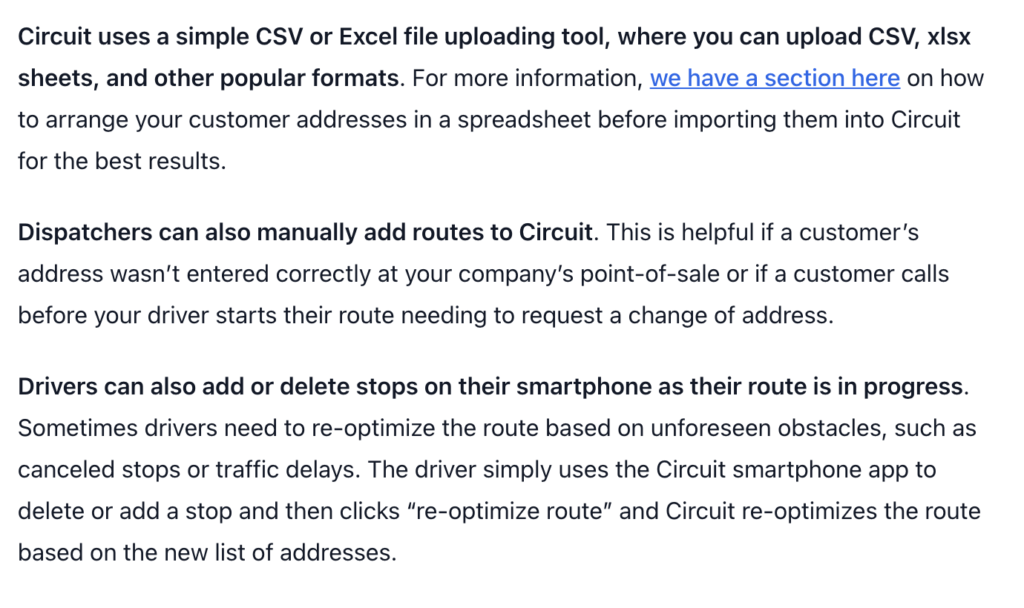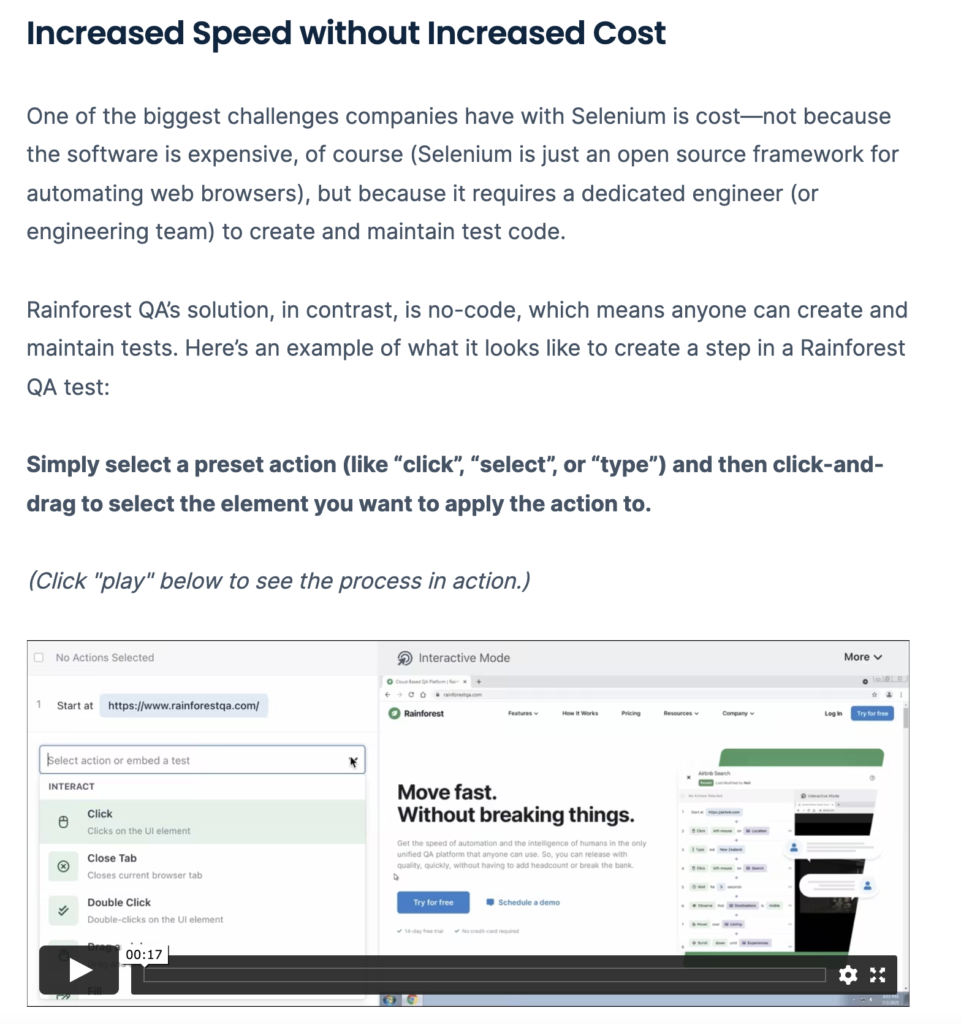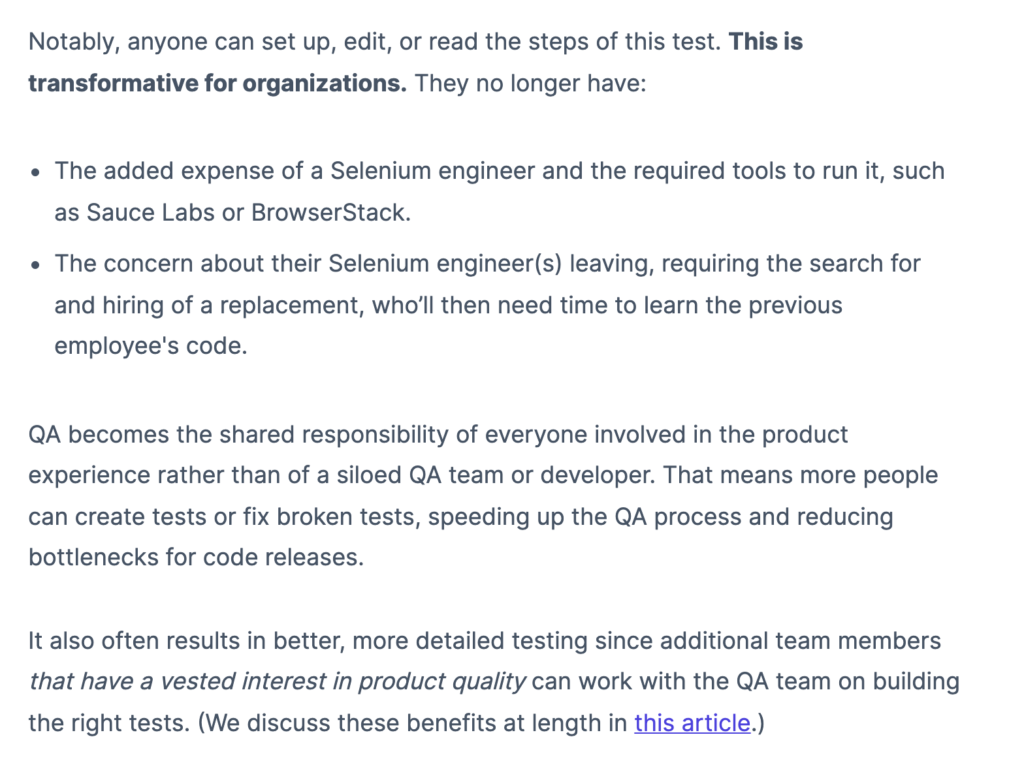Who We Are
Grow and Convert is a content marketing agency that differentiates itself by publishing product-focused, bottom-of-the-funnel content that ranks for “buying keywords” and is optimized to generate conversions and leads, not just traffic. Unlike a lot of other content marketing agencies that only measure traffic, or social shares, or other vanity metrics, we measure and attribute leads to individual pieces of content we produce and report on that to clients (more detail about why we’re different than most agencies in this post). We have a wide range of clients from B2B services, to SaaS, to select B2C companies. Some examples of our clients below.
Our team is 100% remote (and will always be). Our clients are worldwide, although most are in the U.S.
What is Bottom of the Funnel Blog Writing?
We define “bottom of the funnel” as blog posts that sell the client’s product and lead to conversions — for example a BOTF keyword for an accounting product may be “best small business accounting software”. This is as opposed to “top of the funnel” content which is more about giving advice on the topic, like “accounting best practices” — we do very little top of the funnel writing.
Examples of Our Bottom of the Funnel Blog Posts For Clients
Here are several BOTF blog post examples in different styles that we wrote for clients. These are exactly the kinds of posts you’ll be expected to write.
Note how carefully they explain the features of the clients’ product and how they sell the product to the reader. This requires the writer to understand the product, it’s benefits, how it’s better than alternatives at a deep level, and then convey that clearly and compellingly.
If you feel that you can write about products and sell them to the reader like this well, and that you’d enjoy this kind of writing, this role could be great for you.
(I’ve listed the intended SEO keyword, linked to our blog post, and listed where it ranks in Google as of this writing in parentheses next to it).
Best [x] Product
- Time Clock App With GPS (Ranks #1 as of this writing) – This is a simple product without a ton of differentiators vs competition. But you can see how we still describe each of the features in detail and how (and why) it helps the customer.
- Best DAM Software (Ranks #8) – Same concept as above but with more complex software
[x] Alternatives
- Routific Competitors (Ranks #3) – See how little fluff there is in the intro. It immediately sets up the reader to focus on the questions that matter when evaluating software in this space and then sells our client’s product (Circuit) against those criteria.
- Selenium Alternatives (Ranks #5) – Same concept in a more technical space. Note how this explains Rainforest in a way anyone can understand, not just coders.
Disruption Stories
This style of posts are similar to the BOTF examples above in that they sell the client’s product or service, but aren’t targeting any SEO keywords. They deliver the product’s sales pitch (what it’s disrupting) in the context of the story of the company’s founding. We typically promote these via paid social (e.g. Twitter) to get conversions. The same writing skills are required to write these: understand the product and the pain points it solves at a deep level, convey that clearly and compellingly.
- Making Video Editing As Easy As Editing Text
- Why the Large Law Firm Business Model is Dying and What We’re Doing Instead
Specific Excerpts That Exemplify The Writing Details We’re Looking For
Introduction Excerpts
In the first example, time clock apps with GPS, notice how our introduction starts with zero fluff and gets right into the reader’s pain points. Both of these are important characteristics of the writing we do:

There is no typical blog post intro fluff like “Measuring your employees click in and clock out times are important”. The searcher knows this, so we get to the pain points immediately.
Read our full article on how we write blog introductions here.
Then, in the next paragraph, notice how we give a specific example to get into the details:

Examples and use cases like this connect with the reader and ensure there is no room for ambiguity.
To write like this, you need to really understand the product and its use cases.
Read our full post on the detail principle of writing these articles here.
Discussing Features and Benefits
In the Routific competitors post above, note how features are discussed clearly and concisely in this section:

Each feature is described, then the benefit or usefulness of each is clearly stated. This sounds simple when you read the excerpt above but you’d be amazed how many writers struggle at understanding the key features (and why they are useful) well enough to write like this.
Finally, in the Selenium alternatives piece, note how a deep dive into a benefit is written: we start with the pain point and downside of the current tool they are using (Selenium), state the feature of our client’s tool that solves the pain point and give a video walkthrough:

But pay attention to what happens after this video walkthrough. We’re not done. We have a clear, not-too-wordy discussion of the benefits of our client’s no-code approach to this problem:

Again, to write this, the writer needs to understand the product, it’s features, and benefits, and how it solves customer’s pain points at a deep level.
If you think you’d be great at writing like this, this role could be perfect for you.
Necessary skills for our writing team:
- Marketing smarts. The ability to understand products and services (our clients are SaaS, ecommerce, and services), why they are better than competitors, who they are valuable for, what the customer’s lives are like before and after.
- Clarity of Thought. The ability to convey these product advantages and marketing messages clearly and accurately, down to specific features and how they are used by the customer.
- Open to Editing – You must be able to respond intelligently to editing and feedback. We always provide constructive criticism and expect to work with you to make the post as strong as it can be.
- Responsive You must be responsive (we don’t assign pieces or deadlines without checking with you and usually have at least two weeks built in for back-and-forth on each piece).
- A Desire to Learn – You must be willing and eager to learn. We’ve created a number of educational resources to help you understand exactly what we do and what we want from you. Successful members of our team dive into these.
- Long term – We’re looking for long term (1 year+), steady relationships with writers who have room for at least 3 pieces per month. We don’t farm out writing to a list of hundreds of writers. We have a small group of writers that have been extensively trained, are close members of our team, and interact with everyone daily or near daily.
Benefits of working with us:
- Contract (fixed-price per article basis)
- $500 per article for writers who’ve proven they are a long term fit with us and require minimal editing
- Writers can make between $50,000 – $84,000+ annually ($4,000 – $7,000+/month) by writing enough pieces to equate to a reasonable (less than 40 hr) work week
- Writers interested in marketing strategy can also become content strategists, who can make between $50,000 – $84,000+ full time (they also have the option of choosing less than full time work). More on strategists below. We have spreadsheet models of different scenarios we can share for writers who show this level of promise.
- We don’t have word count requirements for our posts. Our philosophy is “However long you need to make your points.” But you can see typical lengths in the above examples, or know that they typically fall between 1200 – 3000 words.
- Lots of Room to Grow. As mentioned above, talented and driven writers can grow into content strategists, where they get paid monthly for managing the strategy for their accounts, get paid $500 per article they write, and get additional payment for articles they delegate to other writers and edit. The content strategist role is long term, flexible, and creatively rewarding.
